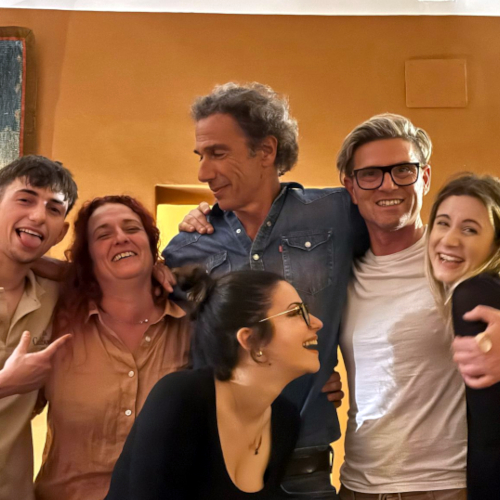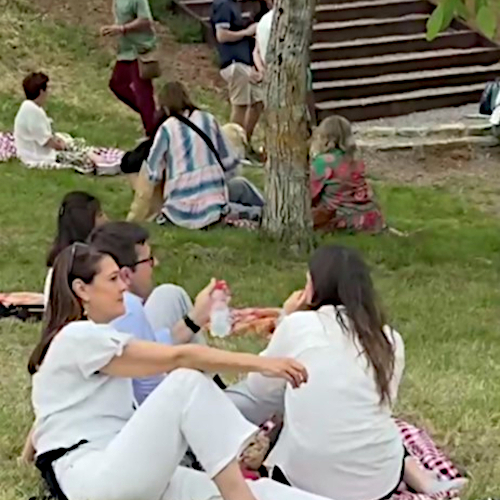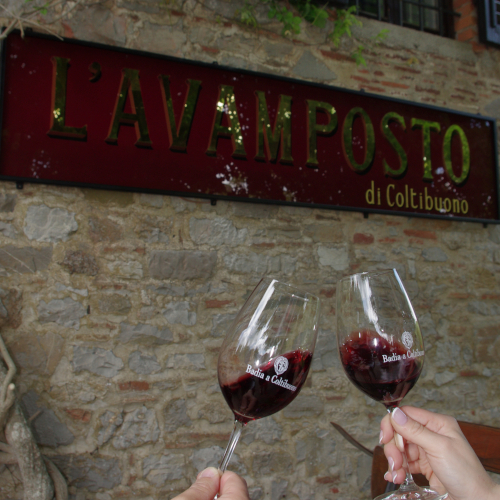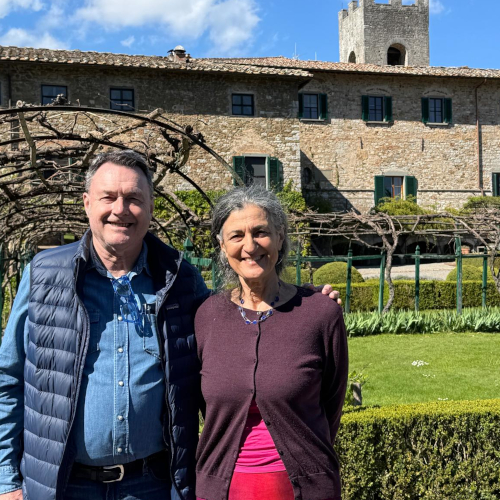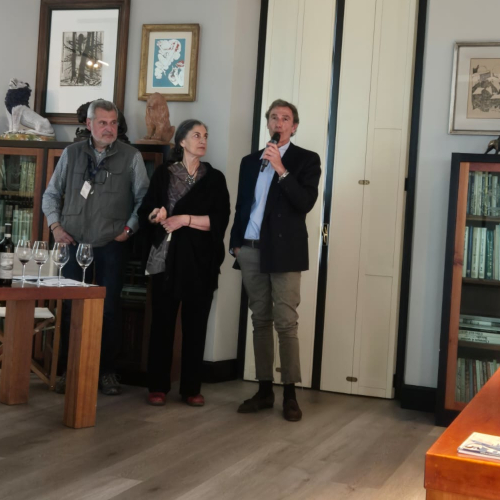Doré Quartet in concert

Concert with free admission, organized in collaboration with Le Dimore del Quartetto.
To attend the concert: book a free seat
On this occasion, the public, upon reservation, will have the opportunity to participate in some paid collateral activities:
– 3:00 pm guided tour with tasting of two wines;
– 7:30 pm buffet aperitif – cost €15 per person
– Following, always upon reservation, Dinner at the Badia a Coltibuono Restaurant
Information and reservations write to reception@coltibuono.com
To learn about the Doré Quartet: go to the page
Divine Trails
Terre di Gaiole
A Day of Wine, Nature, and Scenery
The Viticoltori Gaiole Association, the Radici del Chianti Association, and the Municipality of Gaiole in Chianti invite you to the event “Sentieri Divini” — guided walks through the villages of Montegrossi, Castagnoli, Monti in Chianti, and Lecchi in Chianti, with wine tastings and gourmet pairings.
In the evening, wine tasting stands featuring the wineries of the Viticoltori Gaiole Association (AVG) will be set up in the main square of Gaiole in Chianti.
L’Avamposto di Coltibuono
Over five hundred people at the inauguration
An Overwhelming Success for the Opening of the Avamposto di Coltibuono: The New Place That Was Missing
Over 500 people enthusiastically attended the inauguration of the Avamposto di Coltibuono – the place that didn’t exist, and already feels essential – located along the road leading to the historic Badia a Coltibuono, in the heart of Chianti.
Set in a landscape of rare natural beauty, the Avamposto welcomes visitors with the scent of freshly baked artisan schiacciata, glasses of wine, and drinks to enjoy in the shade of majestic centuries-old lime trees. Adding to the atmosphere: music, picnics on the lawn, and the joy of sharing simple yet meaningful moments.
A true debut in grand style, with local authorities in attendance and a diverse, passionate audience: families with children, young culinary explorers, lovers of day trips, and outdoor enthusiasts.
The Avamposto is open every day from 10:30 AM to 8:30 PM, ready to welcome anyone in search of an authentic and rejuvenating break – a space where time slows down and every detail is lovingly cared for.
Information: badia@coltibuono.com
Bruce Sanderson at Badia a Coltibuono
A welcome visit
Bruce Sanderson, director of tastings for Wine Spectator magazine, visited Badia a Coltibuono, where he met with owners Emanuela and Roberto Stucchi Prinetti, winemaker Maurizio Castelli, and CEO Andrea Cabib.
A tasting of the company’s historic vintages was organized for the occasion, with Badia a Coltibuono Chianti Classico Riserva, Sangioveto, and Montebello.
It was a great pleasure to introduce Bruce Sanderson to the potential of Badia a Coltibuono’s historic wines.
The Ferrari Rally
The Prancing Horse at the gates of Badia a Coltibuono
It was a great pleasure to welcome an enthusiastic group of Ferrari rally participants. The cars of the ‘Prancing Horse,’ one of the finest expressions of Italian technology and style, brought a vibrant touch of color to the austere walls of the ancient abbey that holds the history of Chianti Classico
Charm and Evolution of Chianti Classico
The history of wine in a glass
The Meregalli headquarters in Milan, the Italian distributor of our wines, hosted a vertical tasting of Badia a Coltibuono wines, conducted by Gelasio Gaetani Lovatelli d’Aragona . In front of a knowledgeable audience, Emanuela Stucchi Prinetti and Andrea Cabib guided guests on a fascinating journey that culminated in the opening of a bottle of Badia a Coltibuono Chianti Classico Riserva D.O.C.G. 1959.
“A Chianti Classico,” wrote Francesca Negri in Fancy Magazine, “among the most renowned and prestigious in the world, so enchanting it even captivated Haruki Murakami, who mentioned it in the short story The Folklore of Our Times, part of the collection Blind Willow, Sleeping Woman.”
During the session, a vertical tasting of Sangioveto Toscana I.G.T. and Montebello Toscana I.G.T. was also held, offering a snapshot of Tuscany’s finest wine production.
These wines reflect the estate’s commitment to organic farming, and over time they have earned increasing acclaim. As Matteo Borré wrote in WineCouture, quoting Emanuela Stucchi Prinetti, these are “wines that powerfully and authentically represent their origin. They are loved because their aromas and colors belong solely to these rugged Chianti hills, and through taste, they have the power to evoke countless images of the unique, inimitable beauty of our region.”
The Women of Wine
Cook Corriere della Sera
The Cook magazine of Corriere della Sera, on the occasion of 8 March, published an article by Alessandra Dal Monte dedicated to the women of Italian wine.
Among these is Emanuela Stucchi Prinetti of Badia a Coltibuono: “The first and only woman – to date – president of the Chianti Classico Consortium, Emanuela Stucchi is leading, alongside Andrea Cabib, the development of hospitality in the Badia a Coltibuono winery in Gaiole in Chianti, including visits, rooms and catering, and a more contemporary recalibration of the range of wines that have always been its ambassadors. The Chianti Classico 2020, fresh and savory, with a hint of minerality, has become a cult bottle especially in the United States.”
Gambero Rosso
RS Chianti Classico 2022
RS Chianti Classico 2022 was selected by Gambero Rosso among the best wines in the category in terms of quality and price. The article, written by William Pregentelli, highlights “The expressive naturalness of the Badia a Coltibuono labels, the result of a mature interpretative sensitivity, has for years been the guiding thread of the production of the Stucchi Prinetti family winery, located in Monti in the southern portion of the Additional Geographical Unit of Gaiole in Chianti.”
The author emphasizes how the wines of Badia a Coltibuono can be considered “classics” of the Gallo Nero.
Chianti Classico Collection 2025
Previews and news
Big news awaits you at the Badia a Coltibuono table: new vintages, new ideas and a moment of sharing.
Florence, February 17 and 18, ex Stazione Leopolda
You can find us at table 82

Wine Paris is coming!
Our new releases for 2025
From February 10th to 12th, Paris Expo – Porte de Versailles will host Wine Paris, one of the largest wine fairs in Europe.
We look forward to welcoming you at our stand 6B 136, table 2, where you’ll get an exclusive preview of the exciting new wines we have prepared for 2025.
Don’t miss the opportunity to taste and appreciate the many nuances of Badia a Coltibuono wines… and expect some surprises too!









